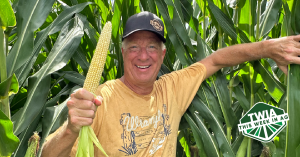Bioremediation can improve the activity and reproduction of wastewater microbiology. The following case studies used bioremediation to improve wastewater treatment conditions and operating costs.
- Wastewater microorganisms struggle to grow and reproduce with inadequate concentrations of phosphorus. A paper mill wastewater treatment system was able to improve and maintain the reproduction and activity of microbiology, reducing the volume of chemicals, chemical costs, and storage needs by replacing DAP with Super Phos®. Read the case study here.
- A heavy organic load can lead to foaming and settling issues caused by filamentous bacteria. An activated sludge system used Bio Genesis® to eliminate filamentous bacteria. Using Bio Genesis® helped to reduce operating costs by lowering BOD/COD and improving settleability while reducing FOG. Read the case study here.
- Elevated COD levels in anaerobic and aerobic lagoons can result in offensive odors, pH levels too low for methane production, and surcharges for surplus effluent containing excess COD. An industrial wastewater treatment plant for corn processing uses Bio Energizer® to improve COD reduction, odor, and pH levels, and reduce charges for excess COD. Read the case study here.
- Poor settling in the clarifier of a wastewater treatment system can lead to high sludge blankets, solids washouts, and TSS excursions. A citrus plant used Bio Energizer® to improve SVI, which in turn helped to reduce the sludge blanket, stop TSS excursions in the effluent, and increase operating efficiency. Read the case study here.
- A treatment plant that is restarted after an upset or dormant period must be inoculated in order to process the incoming organic load. Inoculating with the appropriate microbial mix will eliminate foaming, settling, and elevated BOD. A summer camp that goes dormant in the winter uses MicroPlex® JS annually to jump-start the wastewater treatment system. Read the case study here.
Read more case studies here regarding bioremediation, eliminating foaming, SVI, odor, and elevated BOD.
Related Posts

This Week in Ag #73
Growing up on the farm, we’d often eat our mid-day meal (what we referred to as dinner, but most of the world now calls lunch) at my grandparents’ house, which was the farm’s home base. It was a planned break from planting, harvesting, chore work, mowing, baling hay or one of dozens of other never-ending

This Week in Ag #76
Corn is made in July, soybeans are made in August.” That’s long been the belief of many farmers in the Midwest and much of the South. This is based on the reproductive stages of the various crops. For corn, pollination (tassel time), which usually takes place in early July, is the most critical phase in

Organic Fertilizer Success—45 Years in the Making
The creation of Fertilgold® Organics was a journey 45 years in the making that grew from a desire to contribute to a shared world abundance through our traditions and time-tested values. We have set a new standard for organic fertilizers.


